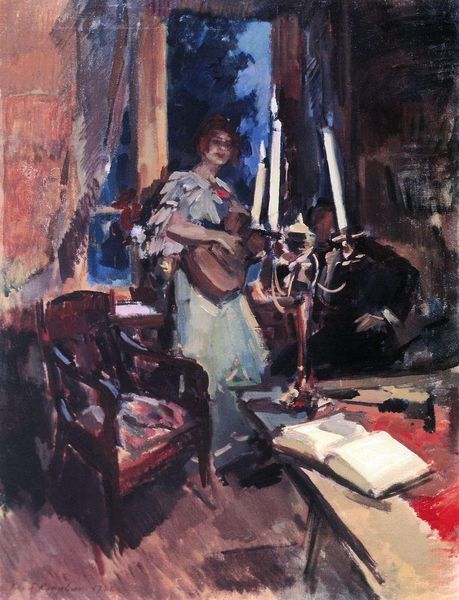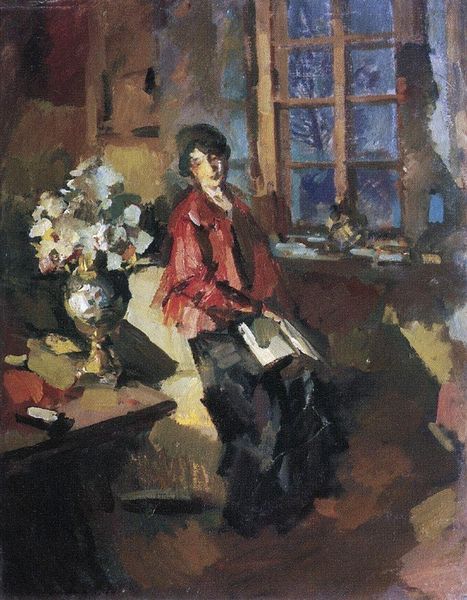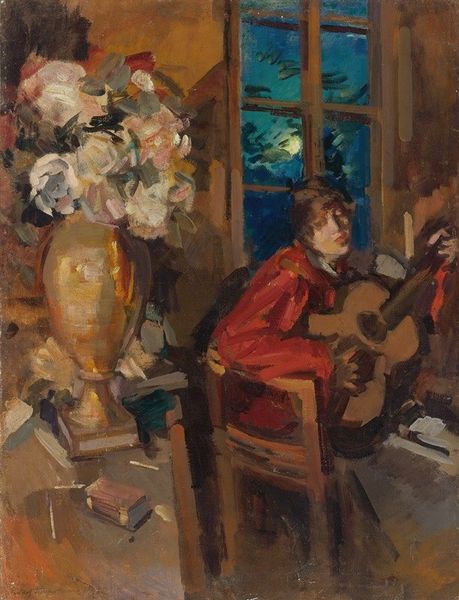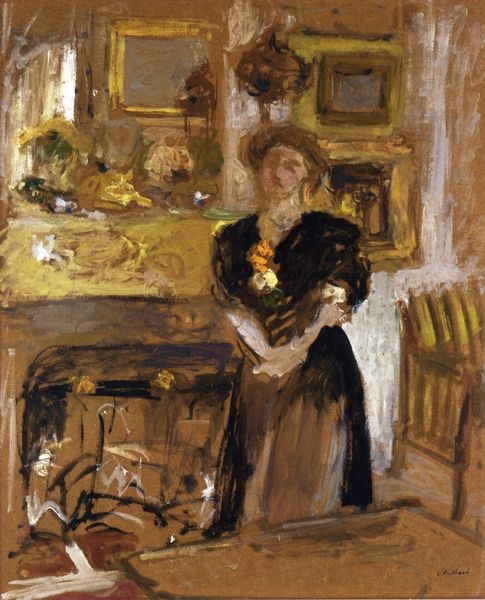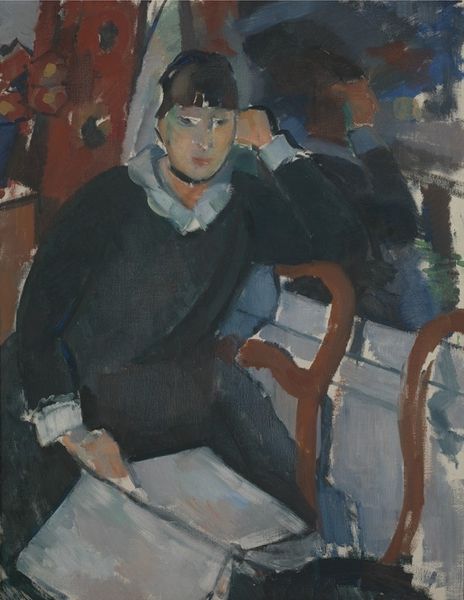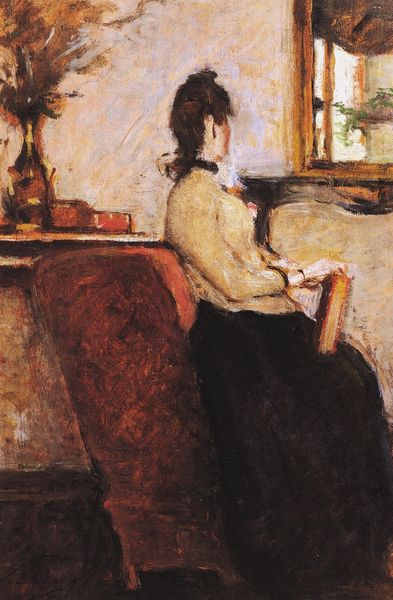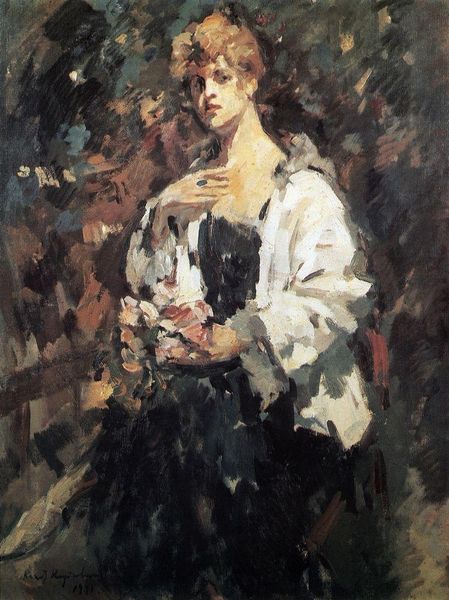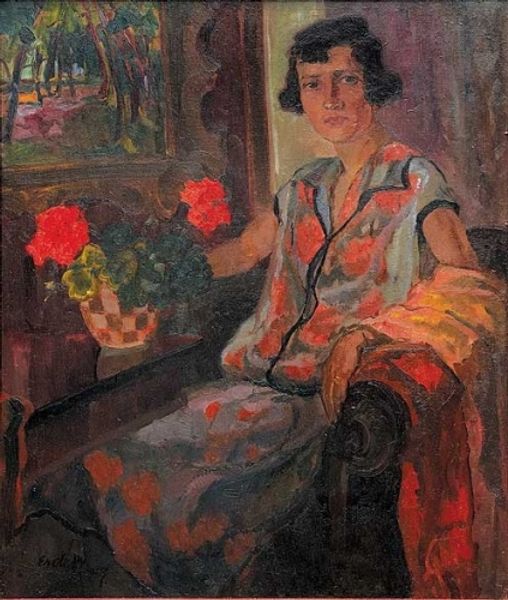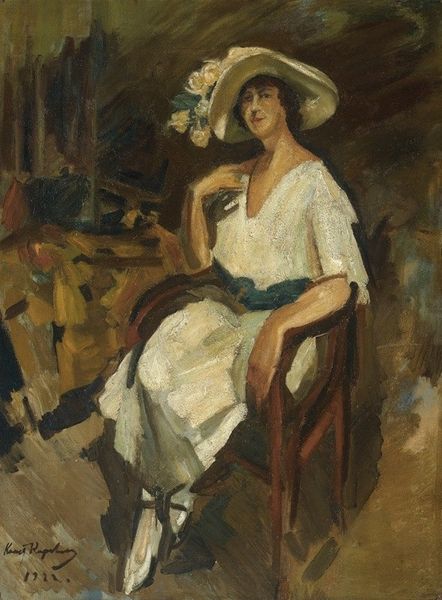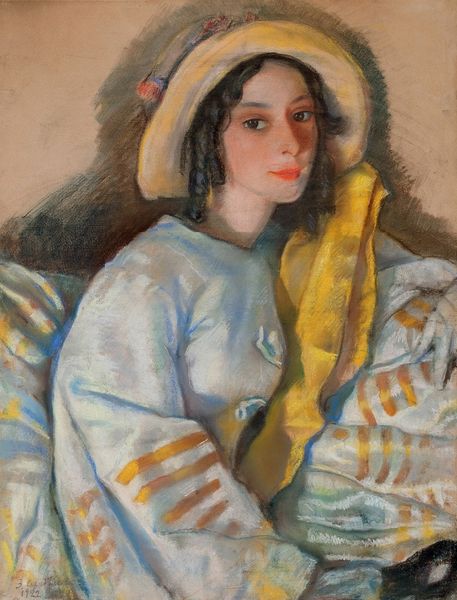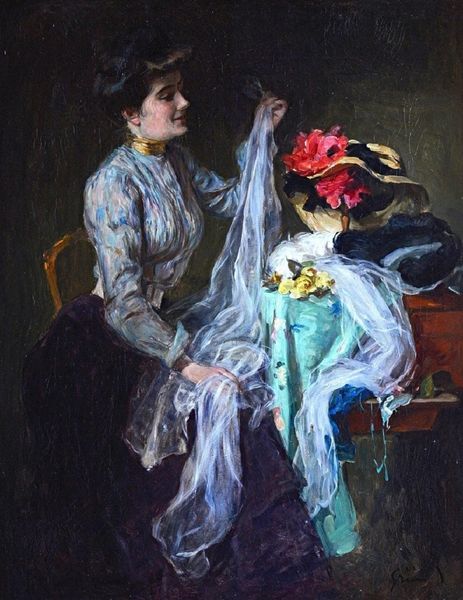
Dimensions: 67 x 87.2 cm
Copyright: Public domain
Editor: This is Konstantin Korovin’s "Lady with a Guitar," painted in 1911 with oil paint. I’m immediately struck by its intimate feel and the juxtaposition of the woman's dark dress against the colorful, almost fauvist background. What historical forces might have shaped this kind of image, moving beyond traditional portraiture? Curator: Good observation! Consider the societal role of women at the time and how it was changing. The early 20th century saw increased female participation in cultural life, yet the art world remained heavily male-dominated. Korovin presenting a woman not as a passive muse, but engaged with a musical instrument, speaks to subtle shifts in gender dynamics and representation. Editor: So, is the musical instrument more than just an aesthetic choice? Curator: Precisely! Musical instruments, especially in portrayals of women, can be symbols of self-expression, creativity, and even independence. The choice of a guitar, often associated with folk music, as opposed to a more formal instrument like a piano, further complicates the narrative. It hints at a democratizing trend within art and culture. Does the loose brushwork remind you of another movement at this time? Editor: Yes, the brushstrokes have echoes of impressionism but feel…freer, somehow? Curator: Exactly. Russia at this point had to consider if its visual vocabulary could continue to align with older modes of painting as society evolved so dramatically. Artists had to choose to embrace the moment and the changing cultural landscape or to retain their prior, comfortable positions. I wonder, how do you view the success of Korovin given what we’ve discussed? Editor: I see your point! Understanding the socio-political context helps me view this seemingly simple portrait as a statement, however subtle, on the evolving role of women and art’s function within society. It makes the work much more layered. Curator: Indeed. Analyzing the artwork through the lens of history allows us to understand not only the painting itself, but also the complex interplay between art, society, and power.
Comments
No comments
Be the first to comment and join the conversation on the ultimate creative platform.

